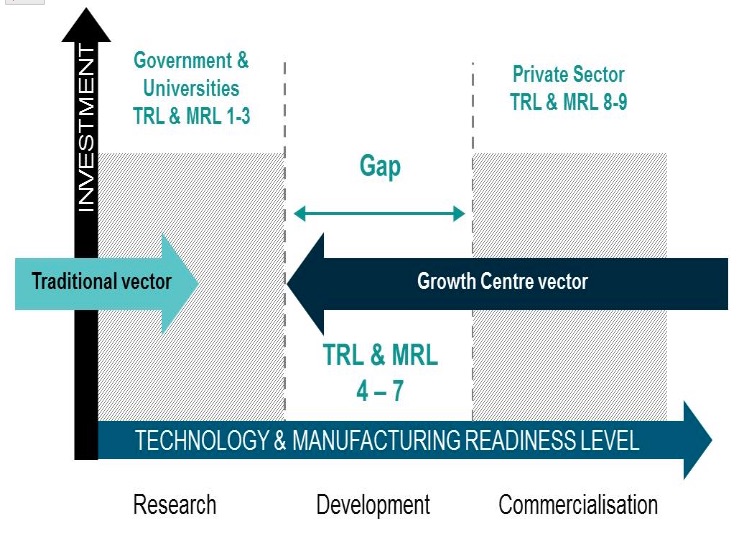Patrick Durrant | Sydney
The managing director of the Advanced Manufacturing Growth Centre (AMGC), Dr Jens Goennemann, gave a speech at the recent National Manufacturing Week expo in Sydney on 12 May, sharing with the audience the means by which the organisation would help industry to bridge the commercialisation “valley of death”.
Goennemann said it was encouraging to see the Government responding to greater customisation and specialisation of products by launching six Growth Centres and offering greater incentives to industry across key industries.
“Advanced Manufacturing has been identified as one of those sectors, with each Growth Centre mandated to deliver a sector competitiveness plan,” Goennemann said.
The former Airbus Group APAC/Airbus Helicopters managing director explained how the growth centres sit at the centre of the broad ecosystem of research, development, and other investment programs (for example the Co-operative Research Centres), with the ecosystem worth approximately $10 billion in investments.
"Industry has an opportunity to be more competitive through [AMGC’s] Sector Competitiveness Plan."
The four key outcomes of the growth centres were: to improve access to global supply chains; improve managerial and workforce skills; improve engagement between research and industry; and recommend regulatory reform.
Goennemann said that consultation with more than 80 industry stakeholders confirmed that access to the global markets (through working with large multinationals or system integrators) was by far the most important of these outcomes.
The stakeholders also felt that there was a good supply of STEM skills and talented employees but demand was lacking because owners/managers wanted greater mobility and flexibility of workers. For example they would prefer to ‘pool’ an engineer between multiple businesses as each might not need someone five days a week.
They also understood tight collaboration between research institutions and business was essential to competitiveness but Goennemann said despite the Growth Centre’s expectation, regulatory reform was the least concern for the stakeholders, with regulatory work focused on entry of trade more important than domestic policy.
To demonstrate how a company might best access the global supply chain, Goennemann used the example of the aerospace industry where Boeing and Airbus practically rule supreme at the top tier as final aircraft assemblers. Clearly an Australian company would have difficulty penetrating this tier.
“Equally so with the mid-tier integrators, such as those building the aircraft braking systems, or the windows,” Goennemann said.
“These are integrators that we may, or may not, become, but underneath these massive system integrators is a global supply chain that Australian advanced manufacturers have the opportunity to link into.”
Speaking from his own experience, he explained how an Australian company called Cablex had started out supplying specific cables to Airbus, and now supply cables to all divisions of Airbus including helicopters.
The AMGC’s five key elements to achieve the four outcomes are: to be industry-led with an emphasis on engaged enterprises; to focus on engaging manufacturers with global supply chains; to engage and collaborate on programs and projects; to work exclusively in the commercialisation “valley of death”; and to transition from public-private funding to private and sustainable funding over four years.
 Bridging the commercialisation “valley of death”. The AMGC will operate in TRLs 4-7 and balance the traditional funding and priority vector. Credit: AMGC
Bridging the commercialisation “valley of death”. The AMGC will operate in TRLs 4-7 and balance the traditional funding and priority vector. Credit: AMGC
Goennemann admitted to being shocked when he saw the data indicating Australia’s share of the trade in intermediary goods (which make up 41 per cent of global trade) was less than one per cent.
“But the good news is that our ability to differentiate value makes us competitive – to shift our determination from only manufacturing finished goods or commodities to finding our niche in the global supply chain – we have a lot of upside.”
Advanced manufacturers needed to focus on pre and post production, because experience in those phases was where value would be realised, Goennemann said.
“Apple derives less than 25 per cent value from its production but no one would claim that Apple is a Chinese company because that’s where the actual production takes place.”
In closing he said a new manufacturing mindset now cut across all sectors of the economy and industry, via the sector competitiveness plan, had an opportunity to be more competitive.
Find out more about the AMGC initiative, programs and membership options here.




